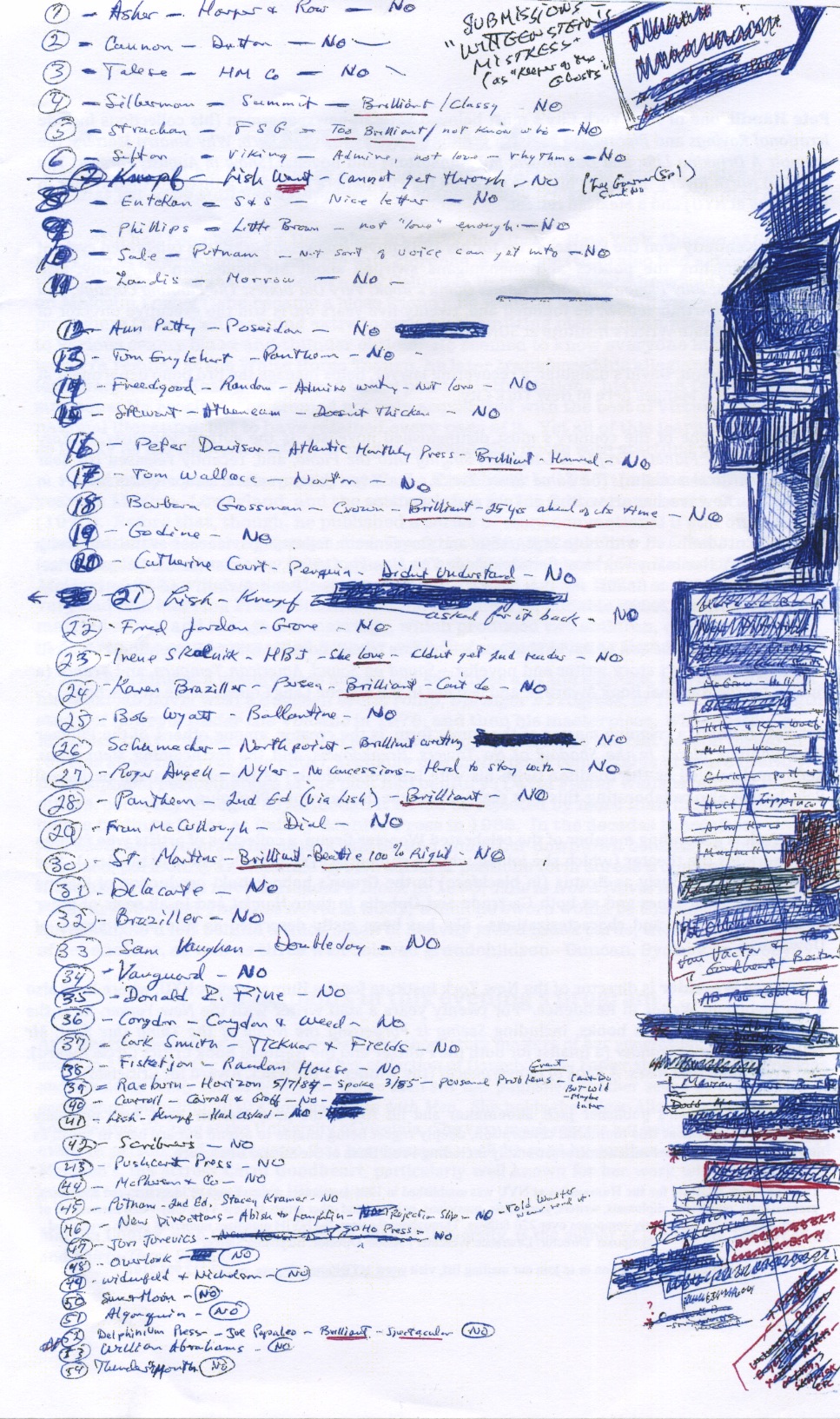25 Points: Wittgenstein’s Mistress
 Wittgenstein’s Mistress
Wittgenstein’s Mistress
by David Markson
Dalkey Archive Press, 1988
248 pages / $16.95 buy from Dalkey
1. David Markson published Wittgenstein’s Mistress in 1988, 37 years after the death of Ludwig Wittgenstein, whose name you may recognize from the novel’s title, or from his being an eminent 20th century philosopher.
2. How is it that one earns the designation philosopher, when one could just as accurately be called a philosophy professor (see also: Martin Heidegger, Immanuel Kant, et al.; technically Nietzsche taught philology)? It may have something to do with one’s work eventually being taught by other philosophy professors.
3. Or with someone someday writing a piece of experimental fiction indebted to one’s philosophy. Perhaps it helps if the title mentions one by name.
4. Possibly it is not unhelpful if one’s mentor is someone else people call philosopher (e.g., Bertrand Russell).
5. Ludwig Wittgenstein is not a character in Wittgenstein’s Mistress.
6. Maybe that’s not right. Possibly Ludwig Wittgenstein is a character in Wittgenstein’s Mistress. As are Rembrandt and Da Vinci and William Gaddis and Helen of Troy and a scratching cat that is in fact (“in fact”) only out of sight duct tape in the wind.
7. Unquestionably, a character in Wittgenstein’s Mistress is a woman named Kate, who had a son once, who is nearing menopause, who was once an artist, who knows a lot about art and art history and philosophy and literature, much of it, she claims, gleaned from footnotes. More questionably, Kate is the only person in the world.
8. Unquestionably, she believes herself to be.
9. One of the novel’s central conceits, if it is not too reductive to talk that way, is that whether or not Kate is “actually” alone in the world is pretty beside the point. Philosophers call this problem solipsism, while the rest of us call it loneliness.
10. The novel’s own text, in the context of the novel, is the artifact of Kate’s time (of course) alone at a typewriter. Ostensibly Kate’s aloneness makes the text necessarily therapeutic, rather than communicative, since there is no one in her world with whom she could communicate. Yet here the text is—in our world—as a novel, and here we are—the readers—reading, receiving it. READ MORE >
January 15th, 2013 / 12:05 pm
Wittgenstein’s Mistress: An Index
A while back, I published an index for Wittgenstein’s Mistress. Blake’s recent post about WM got me thinking that I should repost it here. Please feel free to copy/distribute it/whatever; my goal is to assist anyone reading or doing research on the book, which I think one of the two greatest novels of the past 25 years.
Notes:
- Be warned! I’m sure there are errors. (If you find any, please let me know, as well as any other revisions, comments, or suggestions.)
- Underlined entries are incomplete; underlined page numbers are uncertain. (If you can expand/confirm any of these in the comments, I’ll update the index, thanks!)
The Index

